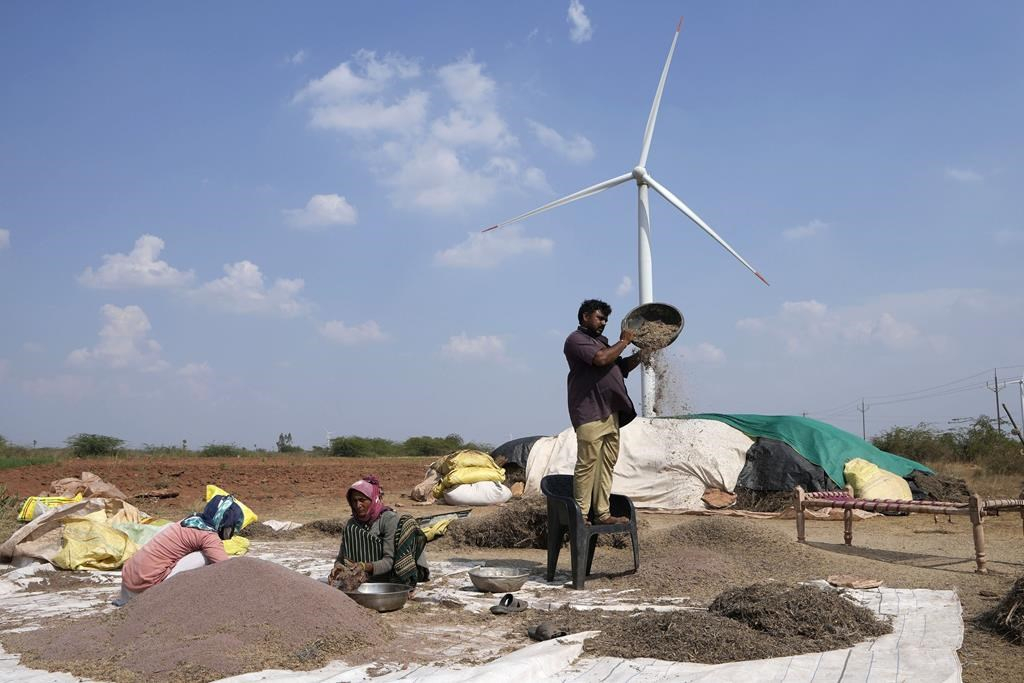Support strong Canadian climate journalism for 2025
When the bidders for India's multibillion-dollar incentive to make solar components were announced in early March, the absence of corporate behemoth Adani Group was conspicuous.
The group — which set up a gigantic factory to make solar equipment in 2016, more than tripled its capacity to make solar panels since 2017 and have begun making silicon materials needed to convert the sun rays to electricity — was expected to “bid in a large way,” said Chiranjeev Saluja, the managing director of Premier Energies, an Indian solar components manufacturer.
The absence is another indication of the holding pattern the group has been in since U.S. short-selling firm Hindenburg Research alleged in late January that the businesses had engaged in fraud and stock price manipulation. Spooked investors dumped tens of billions of dollars in shares, while the company's purported proximity to Indian Prime Minister Narendra Modi has dominated politics in past weeks.
The group has a considerable stake in India's clean energy future: Adani’s renewable energy ambitions account for 10% of the country’s clean energy goals. But some analysts say the group's woes won’t hurt India’s energy transition, especially in the medium and long term. And with a big government-favored player like Adani forced to scale down, companies that were reluctant to bid for clean energy projects in India are likely to step up now, leading to a more competitive market and bigger investments in green energy in India, market watchers say.
The Adani Group, led by founder Gautam Adani, influences the lives of millions in India. It builds roads and runs airports, operates some of its biggest ports, makes defense equipment, and sells cooking oil.
More recently, the tycoon who made his fortune betting on coal in an energy-starved nation in the 1990s and remains the largest private developer of new fossil fuel projects in India, had set his eyes on becoming its biggest renewable energy player by 2030.
The group has a clean energy portfolio of over 20 gigawatts of renewable energy, including 10 gigawatts of solar power, accounting for about 5% of clean energy nationwide. Its renewable energy portfolio is spread across 12 Indian states and includes one of the world’s largest solar power plants in the southern state of Tamil Nadu. Last September, Gautam Adani said the group would invest $70 billion in clean energy projects by 2032.
What appears to have changed, at least in the short term, is the group's ability to raise funds for its ambitious expansion plans.
Adani is still working on existing renewables projects but not those in the pipeline. France’s TotalEnergies paused a $4 billion investment plan to develop green hydrogen with the Adani Group. It's also not bid for any new projects since the Hindenburg report.
But India's power minister R. K. Singh dismissed concerns in February that the stock for Adani's green companies along with the rest of his portfolio plummeting could affect the country's green ambitions in any way.
Vinay Rustagi, managing director at the renewable energy consultancy Bridge to India, agrees that long-term effects will be minimal, but said there may be short-term hits. And there may be benefits to opening space for other companies, said Tim Buckley, director of Australia-based Climate Energy Finance who has been tracking the Adani Group’s growth for decades.
Buckley said there are other Indian companies interested in investing in renewable energy and now there could be an acceleration of India’s transition to cleaner energy. India is the largest emitter of planet-warming gases behind China, the U.S. and the EU, and aims to produce 450 gigawatts of renewable energy by 2030. That would require that a little more than half of India's total installed capacity be clean by the end of the decade.
But Adani Group's continuing interest in new fossil fuel projects put the Indian government under pressure to deliver a fossil fuel agenda and “less pressure to deliver on renewables,” said Buckley.
“At the end of the day, it’s about removing the biggest single private developer of new fossil fuel projects in India, reducing their impact on the political system and democracy in India,” he said.
The company has consistently aligned itself with India’s national priorities and was an early mover into sectors like hydrogen or storing power that were important for the government. Since the report, India’s opposition parties have demanded a probe into the company and questioned Prime Minister Narendra Modi’s proximity to Gautam Adani.
Outside of the Adani Group, major Indian clean energy companies like Renew power, Tata power, Greenko energy holdings and the government-funded National Thermal Power Corporation are aggressively increasing their renewable energy capacity.
Analysts say India’s renewables market is also attractive for foreign investors given the enormous potential for fast growth. The country needs to build 35 to 40 gigawatts of renewable energy capacity each year to meet its 2030 targets.
With so many players keen to invest in India, Rustagi said any ripple effects of the Adani ordeal on the sector will “likely be temporary.”
Ghosal reported from New Delhi, India.
Associated Press climate and environmental coverage receives support from several private foundations. See more about AP’s climate initiative here. The AP is solely responsible for all content.




Comments
Would anyone care about a bit of fraud and stock manipulation if it was a big company in the US? Why is India worrying about a bit of optics? Heck, Modi just jailed the leader of the opposition for being rude to him--can't he just jail anyone who looks sideways at his Adani buddies?